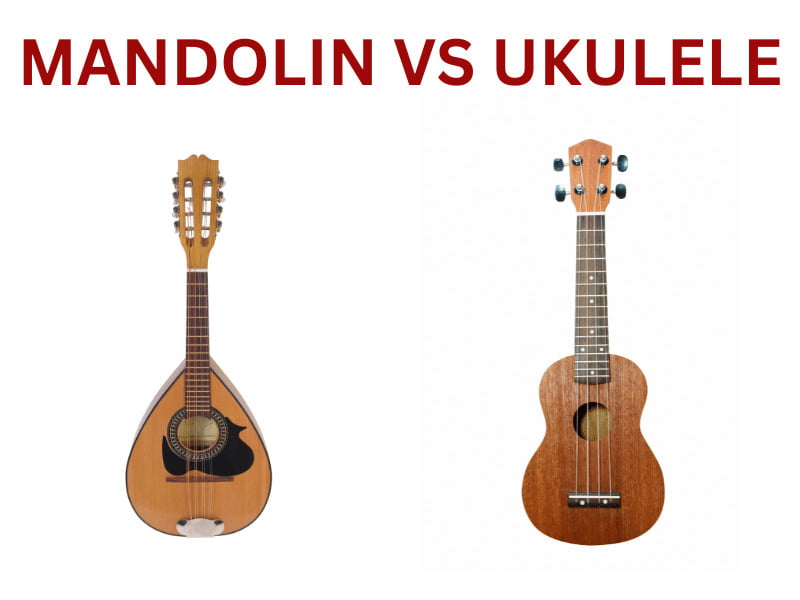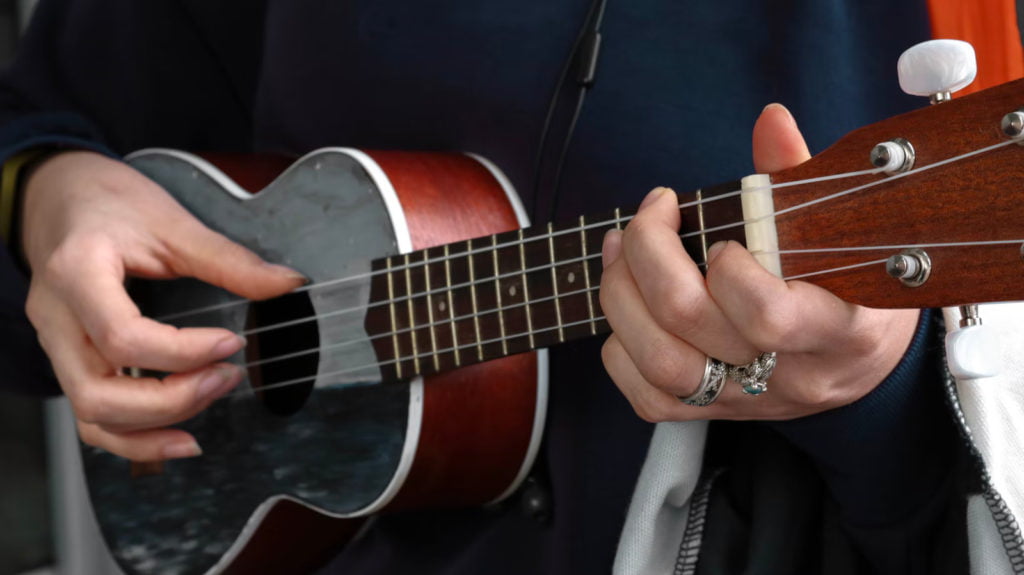Mandolin vs. Ukulele
When it comes to stringed instruments, the mandolin and ukulele stand out for their unique sounds and captivating musical histories. While they may share similarities such as their compact size and fretted design, there are notable differences between these instruments. In this article, we will explore the nuances of the mandolin and ukulele, including their origins, construction, playing techniques, and musical genres. By understanding these distinctions, aspiring musicians can make an informed decision about which instrument best suits their musical preferences and aspirations.
Unveiling the Differences: Mandolin vs. Ukulele
Origins and History:
The mandolin originated in Italy during the 17th century as a member of the lute family. It features eight strings, grouped in pairs known as courses, and is commonly played with a plectrum or pick. The mandolin's popularity spans various genres, including classical, bluegrass, and folk music. Its distinct sound and versatile nature have made it a favorite among virtuosic performers.
In contrast, the ukulele traces its roots to Hawaii and is descended from the Portuguese braguinha. With four nylon strings, it is typically played with the fingers or a felt pick. The ukulele rose to prominence in the early 20th century and is closely associated with Hawaiian music. Its cheerful and bright tone, as well as its ease of playability, have contributed to its widespread popularity in pop, folk, and even rock genres.
Size and Construction
One of the most noticeable differences between the mandolin and ukulele lies in their size and construction. The mandolin, resembling a miniature guitar, typically has a pear-shaped body with a flat top and arched back. It measures around 24 inches in length and has eight strings, grouped in pairs known as courses. The ukulele, on the other hand, is much smaller, with a standard length of around 21 inches. It has a small, guitar-like body and usually features four strings.

Tuning and Sound
Both the mandolin and ukulele employ a similar tuning system, with their strings tuned in intervals of fifths. However, the mandolin is typically tuned G-D-A-E, similar to the violin, while the ukulele is tuned G-C-E-A. The mandolin's tuning allows for versatile playing across different genres, including bluegrass, folk, and classical music. Its bright and vibrant tone is characterized by its distinct projection and articulation.
The ukulele, on the other hand, has a more mellow and relaxed sound, often associated with Hawaiian music. Its nylon strings and smaller size contribute to a softer and sweeter tone. The ukulele's tuning and timbre make it well-suited for strumming patterns, melodic plucking, and accompanying singing.

Playing Techniques
Playing the mandolin involves a range of techniques, including picking, strumming, and tremolo. The use of a plectrum or pick enables fast and precise picking of individual strings or strumming across the courses. Mandolin players often employ double stops (playing two strings simultaneously) and perform intricate melodies with swift finger movements. The instrument's bright tone and rapid articulation make it particularly suitable for virtuosic soloing. Additionally, the mandolin finds a place in various playing styles, including classical, bluegrass, folk, and jazz.
In contrast, the ukulele offers a more relaxed playing experience. It is commonly played by fingerpicking or strumming the strings with the fingers or a felt pick. With its four strings and simplified chord shapes, the ukulele facilitates straightforward chord progressions and easy melodic playing. Rhythmic strumming patterns and simple fingerpicking styles are prevalent among ukulele players. Its gentle tone and approachability make it a popular choice for beginners and lend themselves well to accompanying singing or playing in small ensembles.

Musical Genres
The mandolin's versatility allows it to thrive in a wide range of genres. In classical music, it has been utilized in orchestras and chamber ensembles. In bluegrass and folk music, the mandolin takes center stage, driving energetic solos and contributing to lively ensemble playing. It has also found its way into jazz, rock, and even contemporary genres, with musicians like Chris Thile and David Grisman pushing its boundaries.
The ukulele, known for its association with Hawaiian music, embodies the laid-back island sound. However, its appeal extends beyond that genre. The ukulele has made its mark in pop music, serving as a delightful accompaniment and lending itself well to singer-songwriters. It has also found popularity in folk, indie, and even rock genres. Prominent ukulele players such as Jake Shimabukuro and Israel Kamakawiwo'ole have showcased the instrument's versatility and captured the hearts of listeners worldwide.

Portability and Accessibility
One advantage both the mandolin and ukulele share is their portability. Due to their compact size, they are highly portable instruments that can be easily carried around for jam sessions, gigs, or travel. Their smaller frames make them comfortable to hold and play for extended periods, making them popular choices for musicians on the go.
Additionally, both instruments are relatively accessible for beginners. The ukulele, in particular, is often recommended as a beginner instrument due to its smaller size, ease of learning basic chords, and affordability. The mandolin, while it may have a steeper learning curve, offers a rewarding playing experience for those willing to put in the time and effort.
In conclusion, while the mandolin and ukulele may share similarities in size and tuning, they possess distinct characteristics that make them unique instruments in their own right. The mandolin's bright and lively sound, versatile playing techniques, and presence in various musical genres make it a favorite among musicians seeking a dynamic and expressive instrument. The ukulele's gentle and melodic tones, relaxed playing style, and portability contribute to its charm and accessibility.
Whether you're drawn to the mandolin's virtuosic capabilities or the ukulele's joyful and laid-back nature, both instruments offer a world of musical possibilities and endless enjoyment. So, pick up your mandolin or strum your ukulele, and let the strings guide you on a musical journey filled with creativity, expression, and pure enjoyment.







